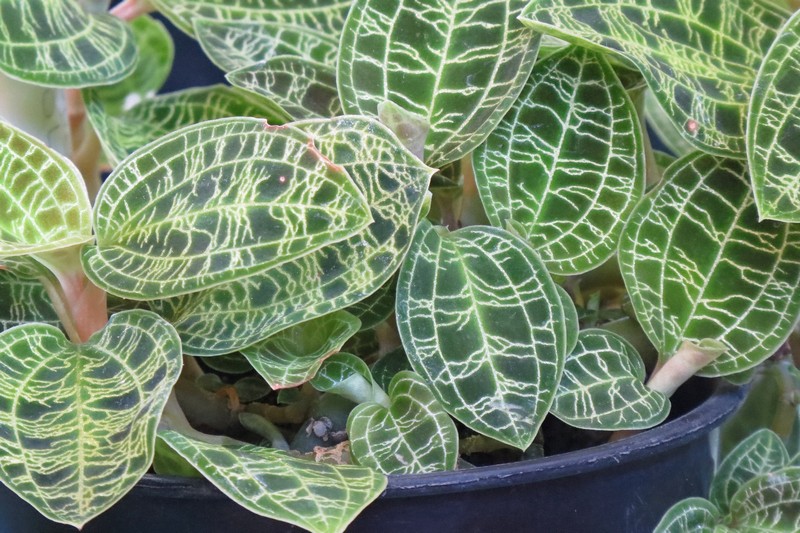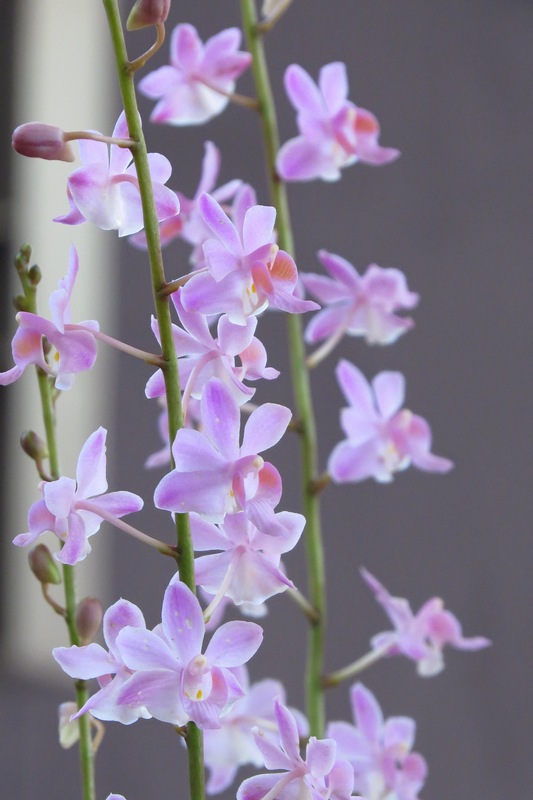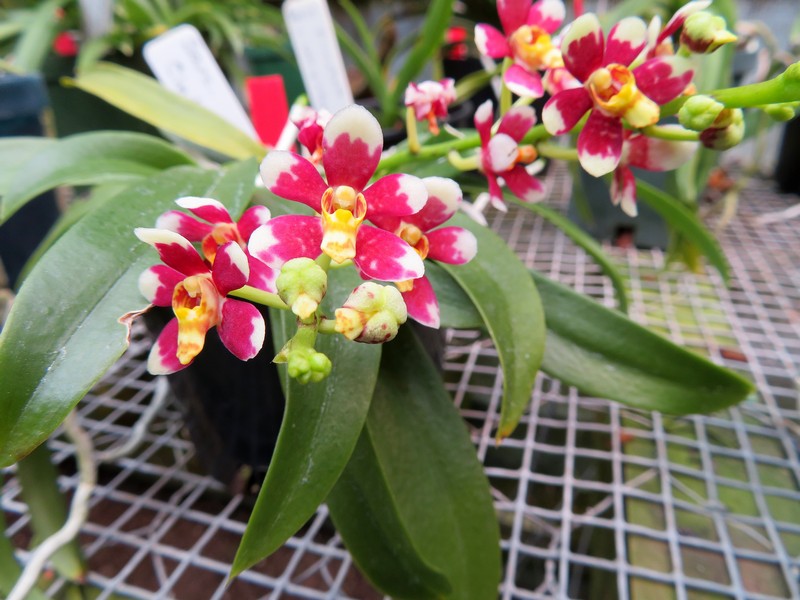By Sandra Simpson
About 30 members in total joined us yesterday for our second annual Garden Tour – some came to all four gardens, while others joined us for just one or two. It was lovely to see some of our newer members among the self-drive group.
To ensure the privacy and security of the gardens we visited, one in particular, I’m not naming names. It’s not apparent to the casual passerby that these collections exist and I don’t want to give the game away to anyone who would exploit the information.

Two of our gardens were rural, two suburban. The first and last on the tour were all about the orchids and having a peep into how other people set up their hobby growing is always interesting. One garden gets very cold in winter (more so than city growers experience) while the other is near the coast and its salt-laden winds but has healthy-looking – and flowering – plants growing outside against the wall of the brick house, sheltered by the boundary fence across the pathway and the eaves.
Both of these growers also have shade and protected houses. I reckon more than one was doing a mental ‘measure up’ as we walked round. “Yep, I could fit that in my back yard” or “what do we need a carport for anyway?”


Of the other visits, one was to a larger garden created by a couple who have a keen interest in the rare and unusual. Always immaculate, this garden had our group asking lots of questions and getting into animated discussions about the plants as we wandered the many pathways.


The other ‘garden’ was simply jaw-dropping. Not because it’s well landscaped (it isn’t) and not because it featured orchids (it doesn’t). Instead, we were treated to how one man’s love of bromeliads and tillandsias has turned into an amazing collection. Plants everywhere, all labelled and all growing well. Our members were astounded and delighted in equal measure. Some hadn’t met tillandsias (air plants) before and so took the opportunity to learn.




From our final garden of the day:
















